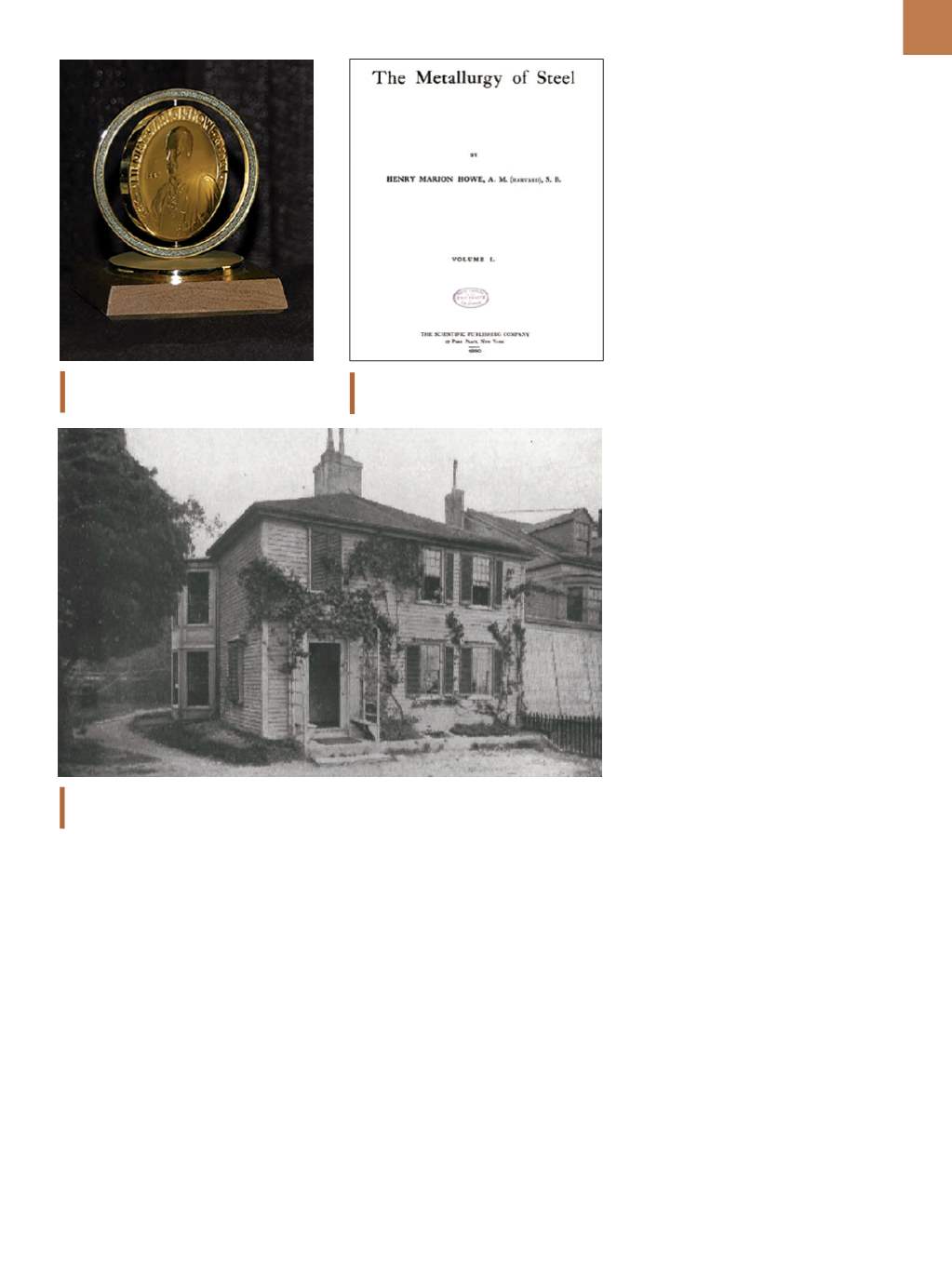

A D V A N C E D
M A T E R I A L S
&
P R O C E S S E S |
S E P T E M B E R
2 0 1 5
3 5
ASM’s Henry Marion Howe Medal, estab-
lished in 1923.
the mechanical properties achieved
with small amounts of alloy additions.
In most instances, he found very little
difference between these alloys and
plain carbon steel. This was to be ex-
pected because the major effect of al-
loys in steel does not alter the hardness.
He also included extensive infor-
mation on chromium in steel. Based on
chemical analysis, he concluded that
most “chromium steel” actually con-
tained little or no chromium, which he
blamed on poor workmanship. He cited
the Eads Bridge across the Mississippi
that was supposed to be made of cruci-
ble steel containing chromium. Howev-
er, chemists found little or no chromium
in the steel. Recent studies of the Eads
Bridge steel found 0.60% chromium
with about the same percentage of car-
bon. Because this steel was made by
the crucible process in 100-lb batches,
the chromium could have varied wild-
ly. He finally concluded that there was
evidence that chromium could increase
the depth of hardening in large parts, in
amounts of 2%. Here he had the secret
of alloy steels—that they have the abili-
ty to increase what we now call harden-
ability. However, neither Howe nor any-
one else followed up on this important
concept, which would not be resolved
until the 1930s.
TEACHING AT COLUMBIA
Howe joined the Columbia School
of Mines in 1897 as the first professor
of metallurgy. While there, he did his
major work in teaching the new field of
metallography and wrote
Metallurgical
Laboratory Notes
and two more major
books,
Iron, Steel, and Other Alloys
in
1903 and
The Metallography of Steel
and Cast Iron
in 1916. He retired in 1913
at age 65 and moved into his second
home called Green Peace in Bedford
Hills, N.Y. His home was equipped with
a full laboratory where he continued his
research. With the U.S. entry into World
War I, Howe came out of retirement and
volunteered his services to the federal
government. He served as a consultant
to the National Bureau of Standards
and the U.S. Bureau of Mines and was
appointed to the National Research
Council.
Throughout his career, Howe was
active in technical organizations. He
joined the newly founded American
Institute of Mining Engineers in 1871,
along with Alexander Holley, while a
student in Troy, N.Y. He was elected
president of that society in 1893. He was
also very active in organizations work-
ing on material standards and joined
the International Society for Testing
Materials. Later, he was a founder of the
American Society for Testing Materials
and served as president from 1909 to
1911. Howe also joined the new Steel
Treaters Club (later ASM International)
when it was formed in 1913.
HOWE’S LEGACY
Howe’s reputation developed due
to his trio of books on steel. His major
legacy, however, is based on his metal-
lography courses, which attracted stu-
dents from across the country. Edgar
Bain and Earl Smith from Ohio State,
Samuel Hoyt from Minnesota, Charles
Fulton from the South Dakota School
of Mines, Joseph Emmons from Cleve-
land, and many others who would go
on to teach the subject or conduct ma-
jor steel research. Among his many hon-
ors is the Henry Marion Howe Medal,
established in 1923 by ASM for his life-
time contributions to steel metallurgy.
The Howe Memorial Lecture was also
established in 1923 by the Association
for Iron & Steel Technology.
For more information:
Charles R. Simcoe
can be reached at
crsimcoe1@gmail.com.
Green Peace home in Bedford Hills, New York. Courtesy of
digital.library.upenn.edu/women/ richards/howe/howe-I.html.First page of
The Metallurgy of Steel,
published in 1890.


















